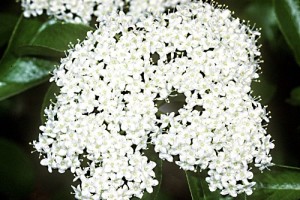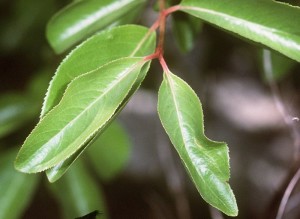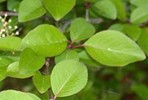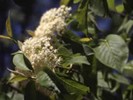Black Haw Bark – Viburnum prunifolium
|
Current Demand = Normal |
Parts Used: Tree Bark |
 |
 |
|
|
Family: Caprifoliaceae (honeysuckle)
Common names: American Sloe, Cramp Bark, Stag Brush, High Bush Cranberry, snowball Bush, High Cranberry, Rose Elder, Nannybush…
Description The black haw is a deciduous shrub native to North America that grows up to 16 feet (5 m) tall. Its red berries ripen in August, and gradually turn blue through the winter. The root bark is collected in autumn, the stem bark in spring and summer. Black haw (Viburnum prunifolium), is a shrub or small tree with serrated oval leaves. Its white flowers and dark berries occur in clusters. The stem bark of black haw is approved for use in foods in the United States. It is native to the woodlands of temperate and subtropical parts of North America, Europe, and Asia. Its other names are stag-bush and American sloe. Black haw belongs to the same genus as the guelder rose Viburnum opulus which is also known as cramp bark. The two are sometimes used interchangeably and have similar properties, but black haw is more specific in its effects on the uterus. The actions of black haw are described as antispasmodic, sedative, astringent, muscle relaxant, cardiotonic, uterine relaxant, and anti-inflammatory.
Growing Region: The Black Haw is found to the east from Maine, south to Florida and west to Kansas and Texas. It is most often found in bogs and low areas in timber. Larger populations exist to the south; black haw grows in most of the eastern half of the United States.
Harvesting/Drying
Parts used: Tree bark
Collection: The bark from the limbs and the trunk are collected in the autumn. The shrubs should be stripped from the branches. The stem bark from branches should be collected in spring and summer. In both cases the bark should be dried in the shade.Like other trees and shrubs, only peel one side of the trunk and prune branches for peeling. This will allow the shrub to continue growing for future harvest. Dry indoors where heat and airflow are both present. A barn loft or attic with a fan works really well. Tree bark as well is best dried indoors though it can be dried in the sun. Drying time will depend on weather conditions, for example, high humidity will slow the drying process, and also thicker bark will dry slower than thin bark.The more air you can get to each piece of bark the better it will dry. A thin layer will dry much easier than a pile. When black haw bark is dry it will be brittle and snap not bend. Once dry, store in a paper bags, cardboard or burlap in a dry place. Never store dried roots, herbs or barks in plastic or it will mold.
Planting Black haw grows on a range of moist to dry, open sites in rocky upland forests. It is also common along fence rows and thickets. It tolerates dry conditions very well, and can grow in either sun or shade. It is present in most counties in Illinois, and ranges from Connecticut to Michigan, south to Texas and east to northern Florida.
Interesting Facts
Viburnum species are widespread and common in the eastern deciduous forest. Most are shrubs and all have fleshy fruits containing a single seed. They are difficult to characterize as a group because there are few all-inclusive characteristics among different species. Smooth black haw has alligator-hide patterned bark, just as the flowering dogwood does. However, its bark is corkier than that of flowering dogwood.
 Root Buyer
Root Buyer
